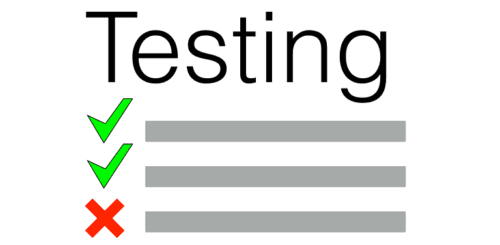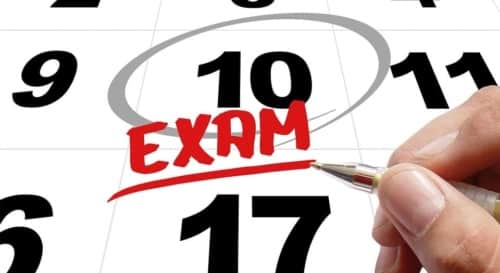Taking steps to reduce redundant and unnecessary student assessments by Kenneth Tam
 According to a report from the Council of Great City Schools (CGCS), the average student completes 112 mandatory standardized assessments between grades Pre-K to 12. This averages out to 20 to 25 hours of standardized testing each year, which is significant.
According to a report from the Council of Great City Schools (CGCS), the average student completes 112 mandatory standardized assessments between grades Pre-K to 12. This averages out to 20 to 25 hours of standardized testing each year, which is significant.
Three factors have contributed to over-testing: 1) the belief that educators need to administer multiple assessments in order to “triangulate” a pattern in students’ level of achievement; 2) when educators use a new theory of practice, they add new assessments addressing those practices while still being reliant on existing assessments; 3) testing is oftentimes decided at a building level leading to multiple tests being used across a district.
Triangulation
Administering multiple assessments to “triangulate results” may sound good in theory, while in reality not all tests given assess the same thing and at the same depth. The unintended consequence of this approach is teachers and administrators having too much, uncorrelated data. What are they supposed to do with it all? How can they easily and efficiently use the data to inform their instruction? It’s a hard and time-consuming challenge.
Addition without subtraction
 When educators are adding new tests to support new practices, they are hesitant to “prune” the current assessments they are using. The addition of something new without the removal of something that exists and educators’ willingness to constantly try something different without giving existing programs time to show results contributes to the problem. Inertia and familiarity also promotes over-testing. Many assessments are administered annually simply due to the fact that it is something that’s always been done. What may have been mandatory a couple of years ago due to a grant requirement, for instance, may now be optional.
When educators are adding new tests to support new practices, they are hesitant to “prune” the current assessments they are using. The addition of something new without the removal of something that exists and educators’ willingness to constantly try something different without giving existing programs time to show results contributes to the problem. Inertia and familiarity also promotes over-testing. Many assessments are administered annually simply due to the fact that it is something that’s always been done. What may have been mandatory a couple of years ago due to a grant requirement, for instance, may now be optional.
District vs. local control
The CGCS found that its districts were using 401 different assessments. When each school in a district is administering different tests, it is difficult to see district patterns. In addition, when students and teachers move from school to school, they have to take/learn different tests or reports, respectively.
There have been state and local efforts to reduce testing time and the number of assessments given, so that more time can be dedicated to teaching and student instruction. A consistent and streamlined approach to student assessments allows districts to focus on the right data so that teachers can deliver quality, individualized instruction students need to succeed.
So, what can your school system do to reduce assessments and minimize testing? It starts with conducting an assessment audit.
Auditing your Assessments
 Assessment audits help districts rationalize the assessments administered to students. By doing so, they also help to establish consistent testing across schools and reduce duplicative assessments so that educators gain back valuable instructional time.
Assessment audits help districts rationalize the assessments administered to students. By doing so, they also help to establish consistent testing across schools and reduce duplicative assessments so that educators gain back valuable instructional time.
Conducting an assessment audit is a multi-phase and multi-week process involving the following steps:
Step 1: Form a committee – Create an assessment committee of dedicated individuals – including district administrators and school leaders – who have the ability to decide or influence which assessments are used and understand the need for the audit and are committed to a new, fresh assessment approach.
Step 2: Set an assessment vision and agree upon the scope of the work – Articulate the district’s vision of an ideal assessment system, addressing questions such as: Who are the users? What are their specific needs? What types of assessments are required to provide the information needed to inform key decisions? What is the scope of the work? Are we making minor changes or a more significant overhaul of the assessments we administer within the district?
Step 3: Determine the criteria of a test worth taking – Look at criteria such as the characteristics of high-quality tests and identify which assessment criteria is important to the district. This could include making sure that assessments measure achievement and growth, inform instruction, align to standards, are timely, predict performance on state tests, and inform parents and students.
Step 4: Conduct an inventory – Now it’s time to identify which assessments are being administered to students across the different grade levels and subjects. The committee should focus on the ones where the majority of the students within a grade are completing the assessment; determine the type and purpose of the assessment; and indicate the frequency, time required for completion and when in the school year the assessment is administered.
Step 5: Analyze findings and make recommendations– First, group assessments by type and identify potential overlaps. Then, check to ensure assessments are not mismatched to their intended purpose. If you compare each assessment against the district’s criteria of a test worth taking, it will allow you to recommend a smaller subset of assessments to maintain.
Step 6: Develop a change management strategy – The committee needs to devise a plan for sharing final recommendations with stakeholders. They will need to consider who will be impacted by the change and if there is a need for additional professional development.
Step 7: Plan the rollout of new assessment system – Create a new assessment calendar that ensures assessments are not concentrated during certain months. Also during this step, identify the questions you want to answer with the assessment data; create a report selector tool that shows which report to use to answer which question; and determine which measures are important and what are the appropriate thresholds to consider. This will help identify students who are below thresholds, and define what actions to take.
Step 8: Execute rollout plan and communicate broadly the decisions made – Put the plan you created in Step 7 into action, and present the findings of the assessment audit, and communicate decisions to the community.
 Taking these steps provides districts with a streamlined assessment strategy that allows them to actually do more with less. Fewer, more consistent assessments provide teachers with both more instructional time and higher quality data that they can use to effectively individualize their instruction to help students make real academic gains.
Taking these steps provides districts with a streamlined assessment strategy that allows them to actually do more with less. Fewer, more consistent assessments provide teachers with both more instructional time and higher quality data that they can use to effectively individualize their instruction to help students make real academic gains.
Author
Kenneth Tam is the executive director of personalized learning and assessment at Curriculum Associates (www.curriculumassociates.com), creators of the i-Ready Diagnostic & Assessment program for grades K-12.
Further Reading
- EdWeek – How to Assess Arts Education—And Why You Should
- EdSurge – How to Overcome Apathy and Disillusionment When Standardized Tests Fail Kids
- San Francisco Examiner – SFUSD may cut down on tests for students






